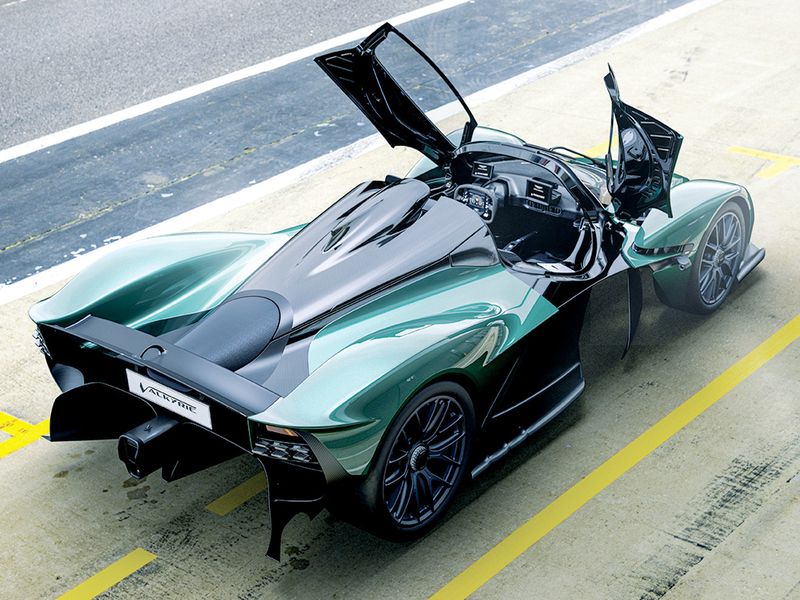
The unlikely combination of a Canadian billionaire, a German luxury brand and the booming SUV market has given Aston Martin another chance at long-term success.
Though still losing money, Aston’s sea of red ink is rapidly shrinking thanks to strong sales of the company’s first SUV, the DBX, reduced costs from using Mercedes-Benz engines and technologies and delaying the move to electric vehicles until 2025.
In an interview with CNBC last month, Executive Chairman Lawrence Stroll, the Canadian billionaire whose investment gives him a 25 percent ownership stake, said: “The risks are behind us. We have tremendous growth in front of us and a Formula 1 team to market it.”
Stroll says Aston is on track to produce 10,000 vehicles per year in 2025 — up from 6,000 this year — as part of its Project Horizon rejuvenation plan.
The next five years will be busy for James Bond’s favorite high-performance brand as Aston introduces hybrids and midengine cars and expands the DBX lineup.Vantage: An extensive freshen in 2023 will entail updated interiors, styling and electronics. Horsepower from the Mercedes V-8 also is likely to increase.
DB11: According to the company’s annual report, a freshen is coming in 2023 — the first since the 2017 launch. Upgrades to infotainment and connectivity will be included.
DBS: A freshen is scheduled for 2023.
Valkyrie: Just 275 hand-built copies of the V-12 hybrid midengine supercar will be built, and deliveries start this year. No matter how many millions you have, you can’t get one because they are already sold out. Production looks like this: 150 hardtop models priced at $3.5 million will be built, to be followed by 85 convertibles with a sticker price of $3.8 million. The planned 40 AMR Pro models are not street legal and can be used for racing only. Horsepower from the high-revving Cosworth motor is rated at 1,139. No freshens, updates or successor models are planned.
Valhalla: The midengine hybrid sports car could arrive in 2024 with a Mercedes-Benz V-8, which is a change from the original plan to use Aston Martin’s twin-turbo V-6.
Vanquish: The classic Aston nameplate will switch from front engine to midengine around 2024, and hybrid powertrains with about a 15-mile all-electric range are planned. Aston is considering changing the name.
DBX: No major cosmetic updates are planned for the DBX, launched last year, until 2025. However, a premium high-performance model is expected to arrive in the first half of 2022 with slightly different styling. Aston plans to electrify the SUV with hybrids and plug-ins. A mild hybrid could be available as early as the 2022 model year.
Lagonda: Aston intends to be an all-electric brand by 2030, possibly reviving the Lagonda nameplate.